Nixes Mate
As my slow-moving project to visit all the islands in Boston Harbor moves along, there remain fewer and fewer unexplored islands, and we start to turn our attention to the islands that are usually not even included in island lists. Small rocky outcrops where it is not even clear how to land. Islands that disappear under water at high tide.
Of the latter, there is one island in particular, with the weird name Nixes Mate. For a long time, I was trying to figure out how to land there.
It used to be a pretty normal island of 12 acres, with sheep grazing there, and then it somehow kept diminishing, and these days only a tiny part of it is visible at high tide. The rest is hidden underwater and only appears when the tide is ebbing.
There is a related legend that explains the island’s name. There was one captain, by the name Niks or Nix, who was murdered while sailing on the high seas. His first mate was accused of the murder and sentenced to hanging on this very island. The first mate kept professing his innocence and at the gallows cursed the island and made a prophecy that the island would sink in the water. And what do you think? The prophecy has come to pass!
The island of Nixes Mate is located by the entrance to a narrow channel between Log Island and Gallops Island. The channel is surrounded by shoals (primarily, the underwater part of Nixed Mate) and by submerged rocks, plus tidal currents, — all that made it pretty challenging to figure out where we could anchor and mount an island exploration party by dinghy.
It just so happened that last spring I got myself a very unusual little boat: a sailing tandem trimaran kayak with pedals for when the wind dies. It is made by Hobie, the company better known for its beach catamarans. My boat’s model is called Tandem Island, and I named my boat Sea Fork.
The presence of the Sea Fork has significantly changed our island exploration game. Now we don’t need to anchor the boat offshore and mount a landing party. We can just beach the boat and step out of it onto the island.
Back in May, Sergey and I sailed the Sea Fork out of the town of Winthrop in Boston Harbor for her first sea trial. The tide was going out for quite some time, and the temptation was impossible to resist.
Actually we had planned originally to visit one of the outer islands (and eventually ended up on Calf Island), but Nixes Mate was virtually on our way anyway.
It’s impossible to miss it, even from afar, neither on high tide nor on low tide, because they built a square granite foundation on the island, and on top of the postament, a black-and-white pyramid to warn mariners of the surrounding shoals. The foundation and the pyramid together are twenty feet high.
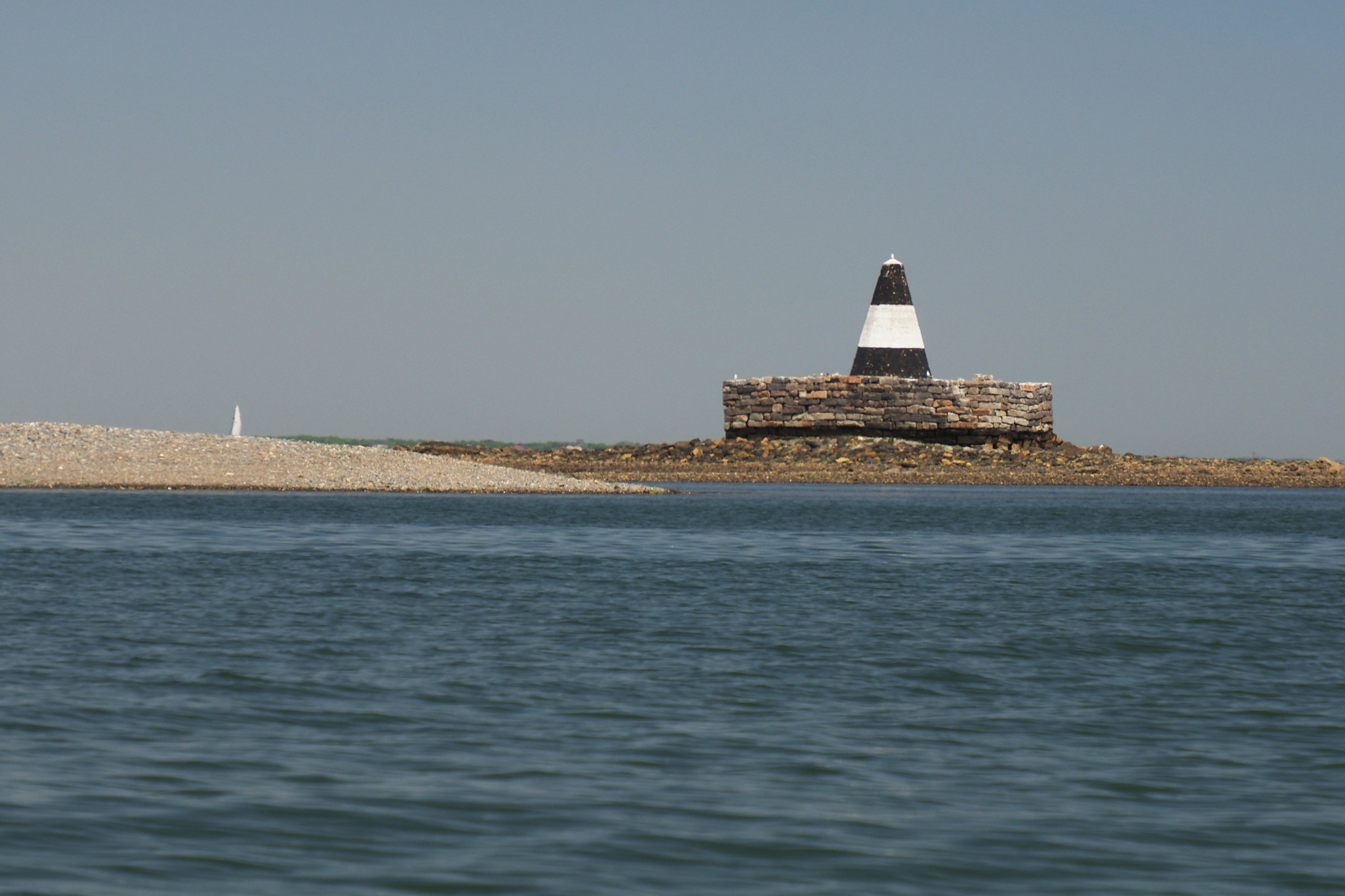
After we had left Winthrop Harbor behind us and made our way past the airport, we pointed the boat at the pyramid in the distance. The pyramid was built in 1835 out of wood, and later (during the Second World War) covered with a layer of concrete.
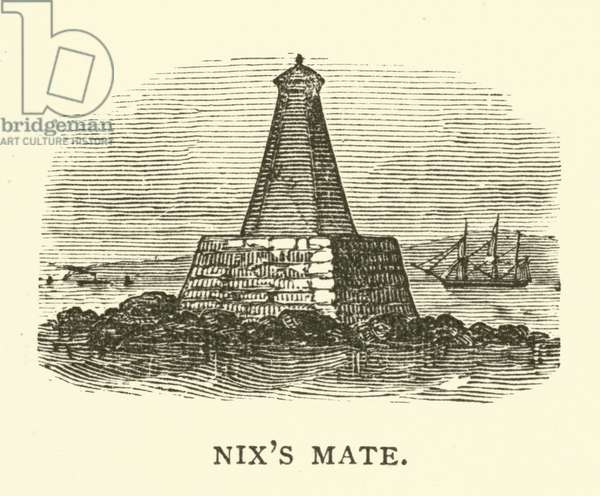
By 2001 the pyramid had peeled off and generally deteriorated. The Coast Guard was going to demolish it and replace it with a standard modern navigational mark. At that moment, Bostonians, in their usual manner, revolted against the overreach of the federal government. The campaign to save the historic Boston landmark, the black and white pyramid out in the harbor, was prolonged, loud, and unexpected. The Coast Guard looked at all that, shrugged, repainted the pyramid, and left it as is otherwise.
When we arrived at Nixes Mate, the tide was still going out, and the island was already pretty large. The landing was easy and uneventful: we furled the sail, took the pedals out, raised the rudder, got out of the boat in ankle-deep water, and pulled her to the rocks.
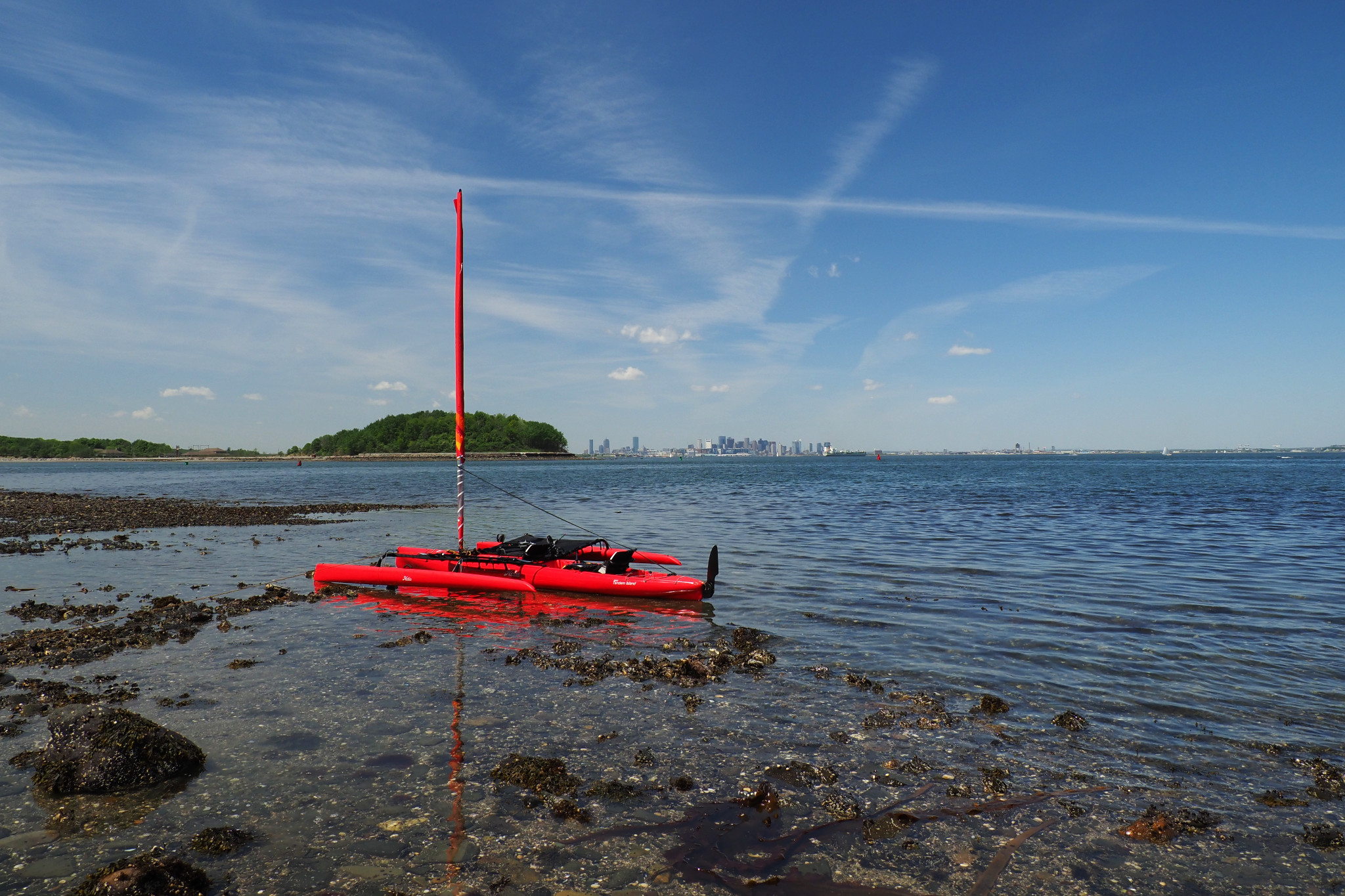
The island itself was entirely flat and covered with pebbles and sharp seashells. We were very happy to wear out booties and not to be barefoot.
Actually, even though Nix’s first mate have cursed the island, — or perhaps prophesied rather than cursed, — there was a more concrete historic reason for the island disappearance. For many years, people were taking it apart for ballast for ships leaving Boston. They kept doing that, and got carried away, and didn’t notice until there was no island left.
Pedant historians point out that the Nix legend cannot possibly be true. The first mention of the island name goes back to 1636, when it was sold to one John Gallop, one of the Boston Harbor’s first pilots. Back then he was living on the neighboring island, which now bears his name: Gallops Island. It turns out that as of that year, there was no murder at all reported in Massachusetts Bay Colony, not to mention piracy-related. The legend just doesn’t check out.
But so what? First (and most importantly) the island has actually disappeared into the water, exactly like Nix’s mate prophesied. And second, the island’s history involves a number of real, historically confirmed pirates. Probably the most well-known of them is William Fly (?–1726): the perfectionist who, while being executed, taught the hangman to correctly tie the knot for the noose. He was executed in Boston (the noose knot did its job perfectly), and then he was promptly hung on Nixes Mate as a warning to the mariners sailing by: so they would carefully consider all pros and cons before breaking bad.
Sergey and I walked to the stone base of the pyramid. I expected to take a photo, check a mental checkbox, and then move on. However, it turned out that there were steps of a sort in the postament, and it was possible to climb them up to the pyramid itself. Obviously, we could not stop ourselves from doing that.
Up on top, besides the pyramid itself (as black-and-white up close as it was at the distance), we found magnificent views of the distant Boston and neighboring islands, and also of the Nixes Mate island itself, rising out of the water at the low tide, with the Sea Fork peacefully resting on some rocks.
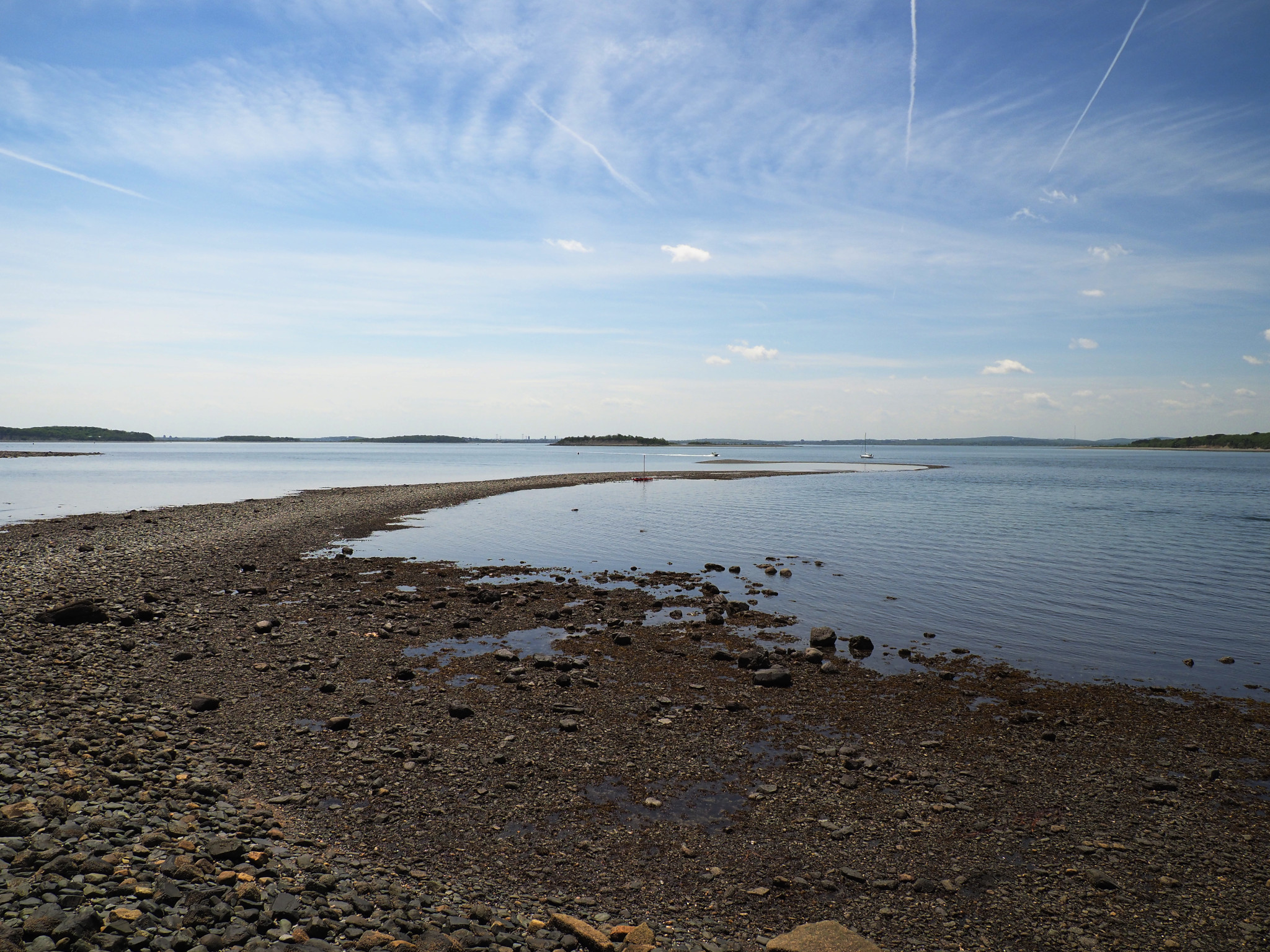
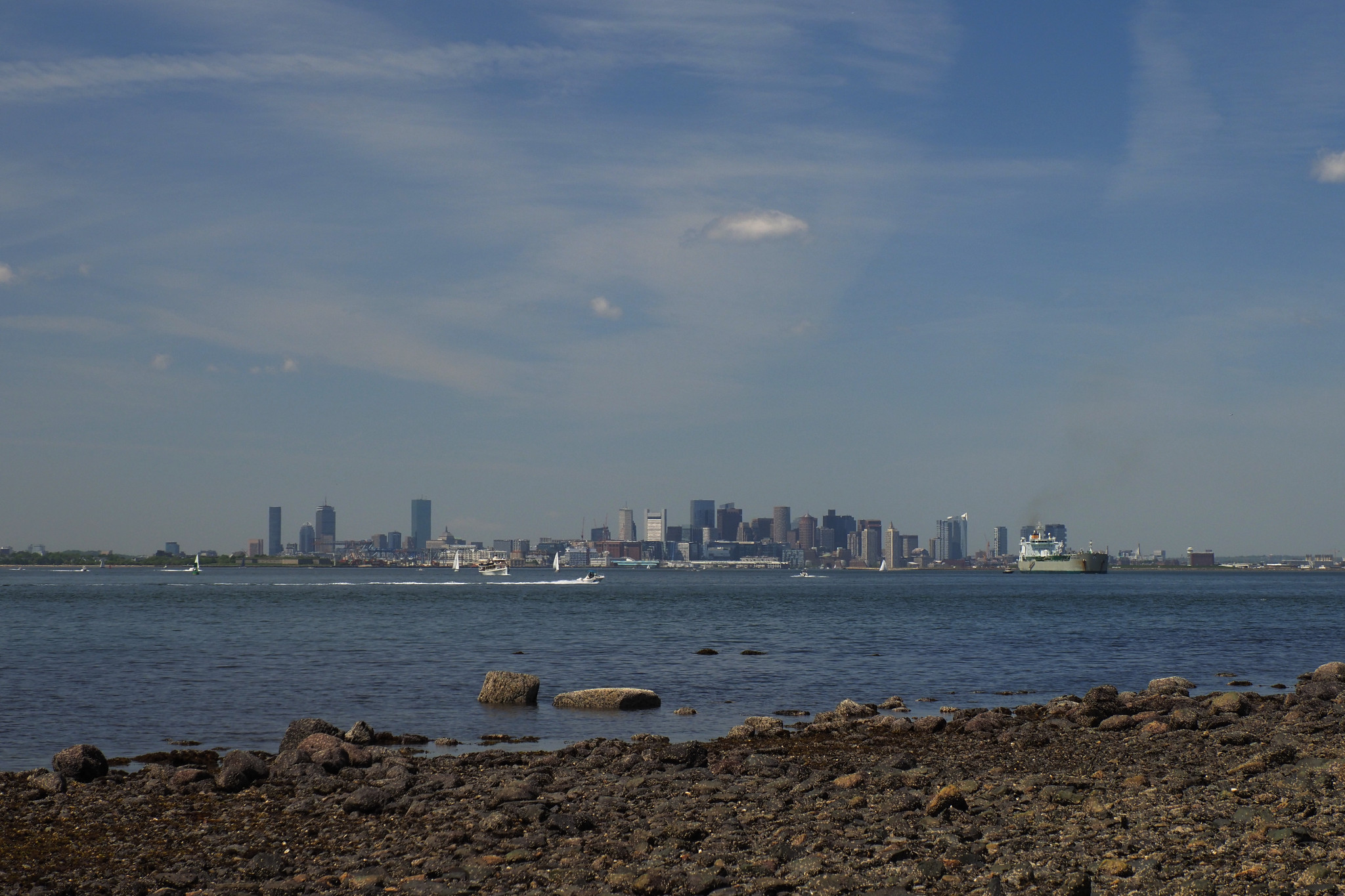
As for me me, after reading up on the island’s history, I was thinking how many different mariners these waters have seen. First colonists, merchantmen and sailors, battleships, first colonial British, then independent American… real pirates… and real Native Americans in their canoes too, up to the nineteenth century… They are all long gone. Now we sail this water. But the water remembers it all.
Speaking of which: there was nothing left to do on the island. We climbed down from the postament and walked back to our Sea Fork. It was interesting to realize that we were walking over the sea bottom: at high tide all that would go underwater, only the pyramid would remain. But for now the tide was still going out, and our boat was getting more and more stuck on the rocks. It took some effort to float her again.
We gave her one good push, guided her to the water deep enough to put in the pedals, the centerboard and the rudder, climbed in, unfurled the sail, and took off for more adventures: to have lunch on Calf Island.
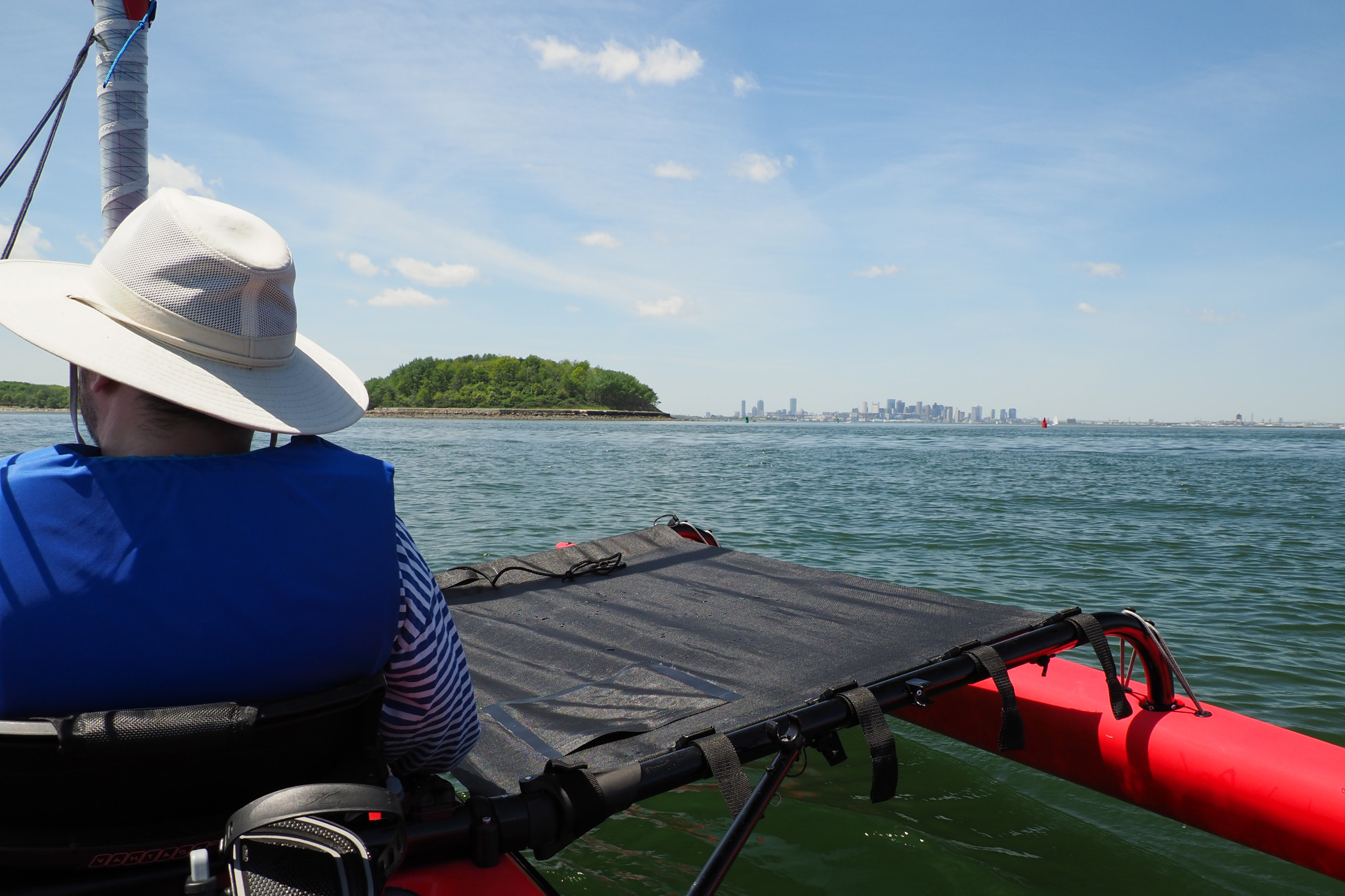
A few more photos.
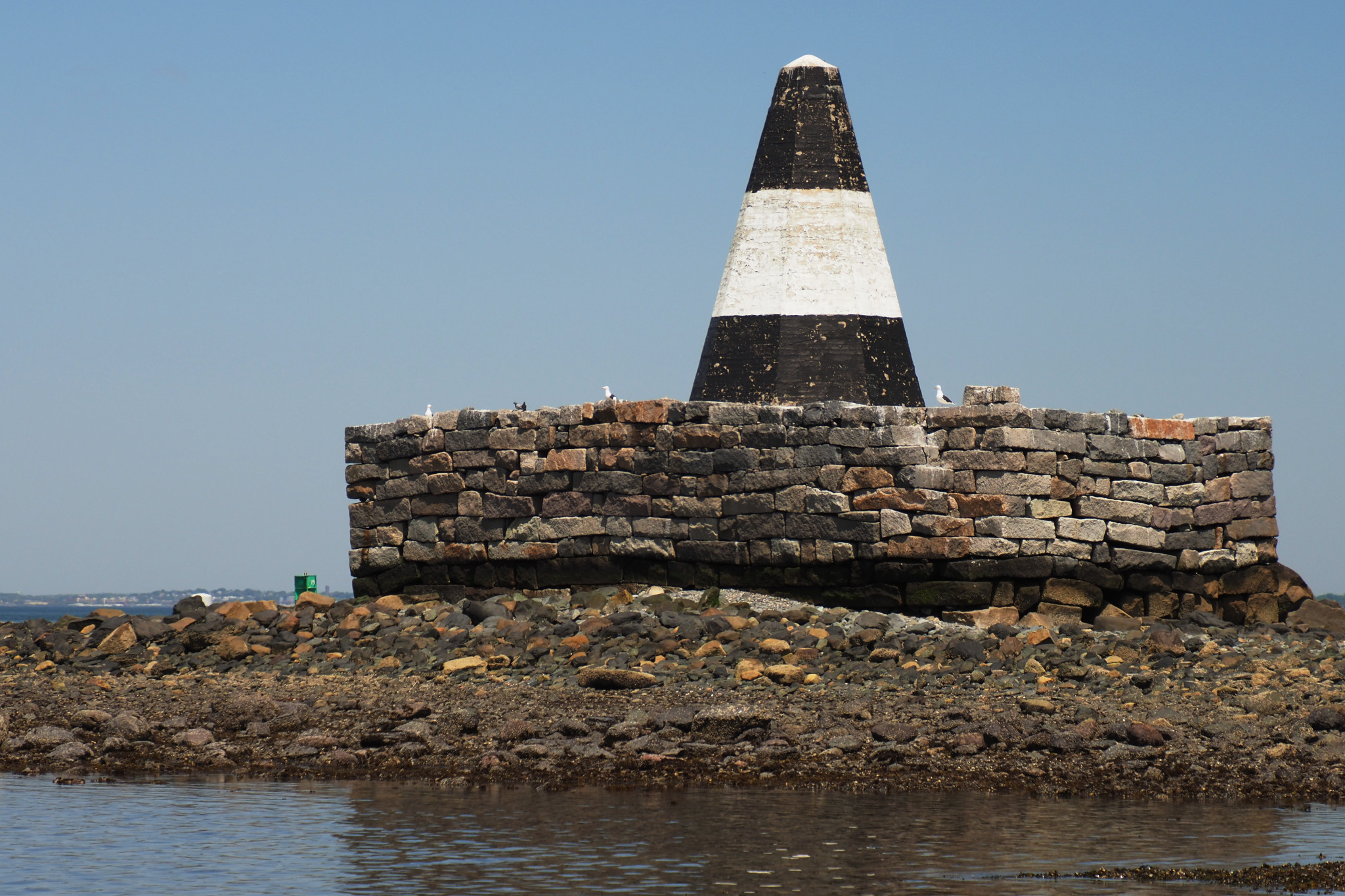
The great winding island of Nixes Mate, as seen from the See Fork.
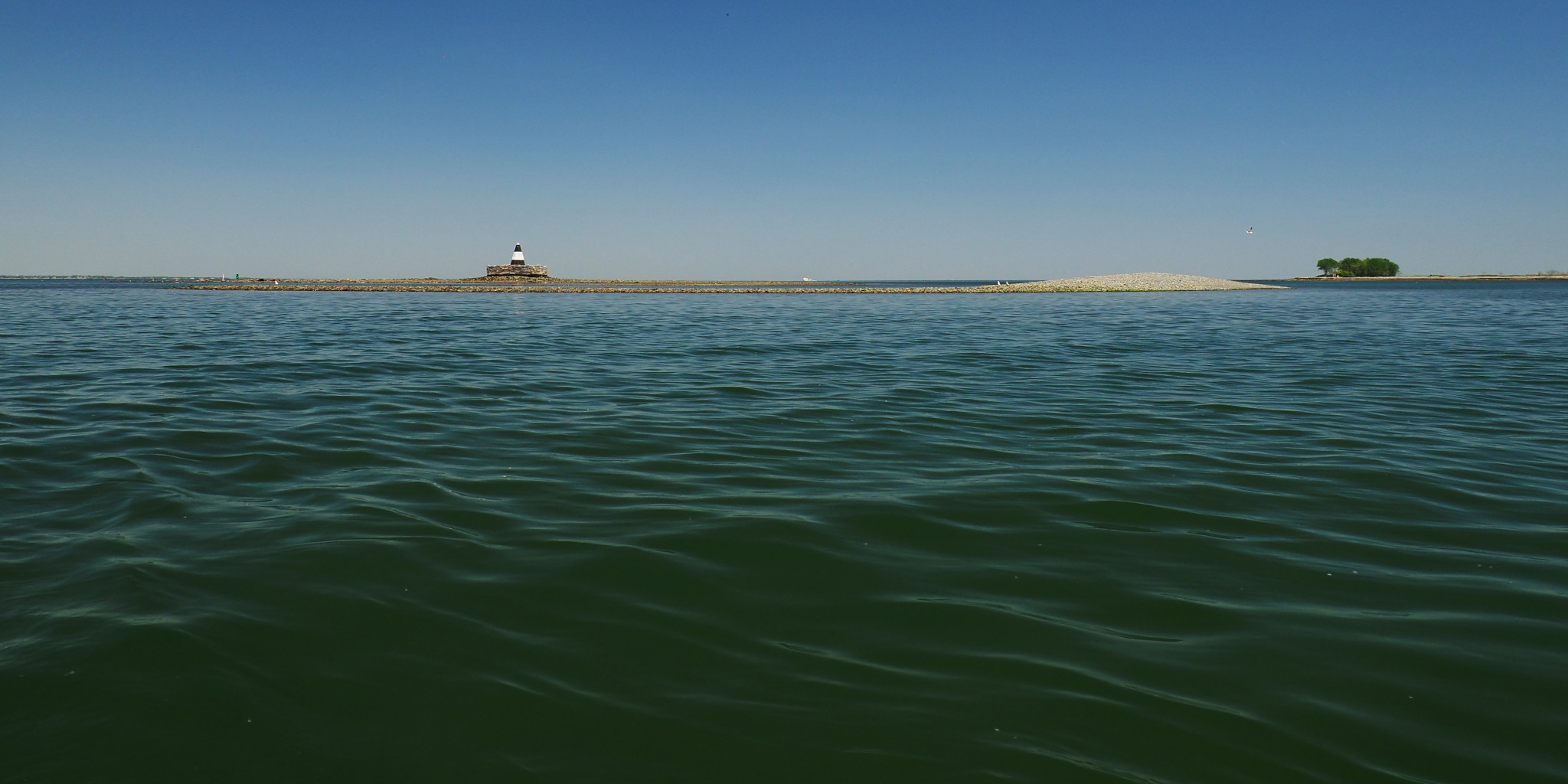
The way to the pyramid.
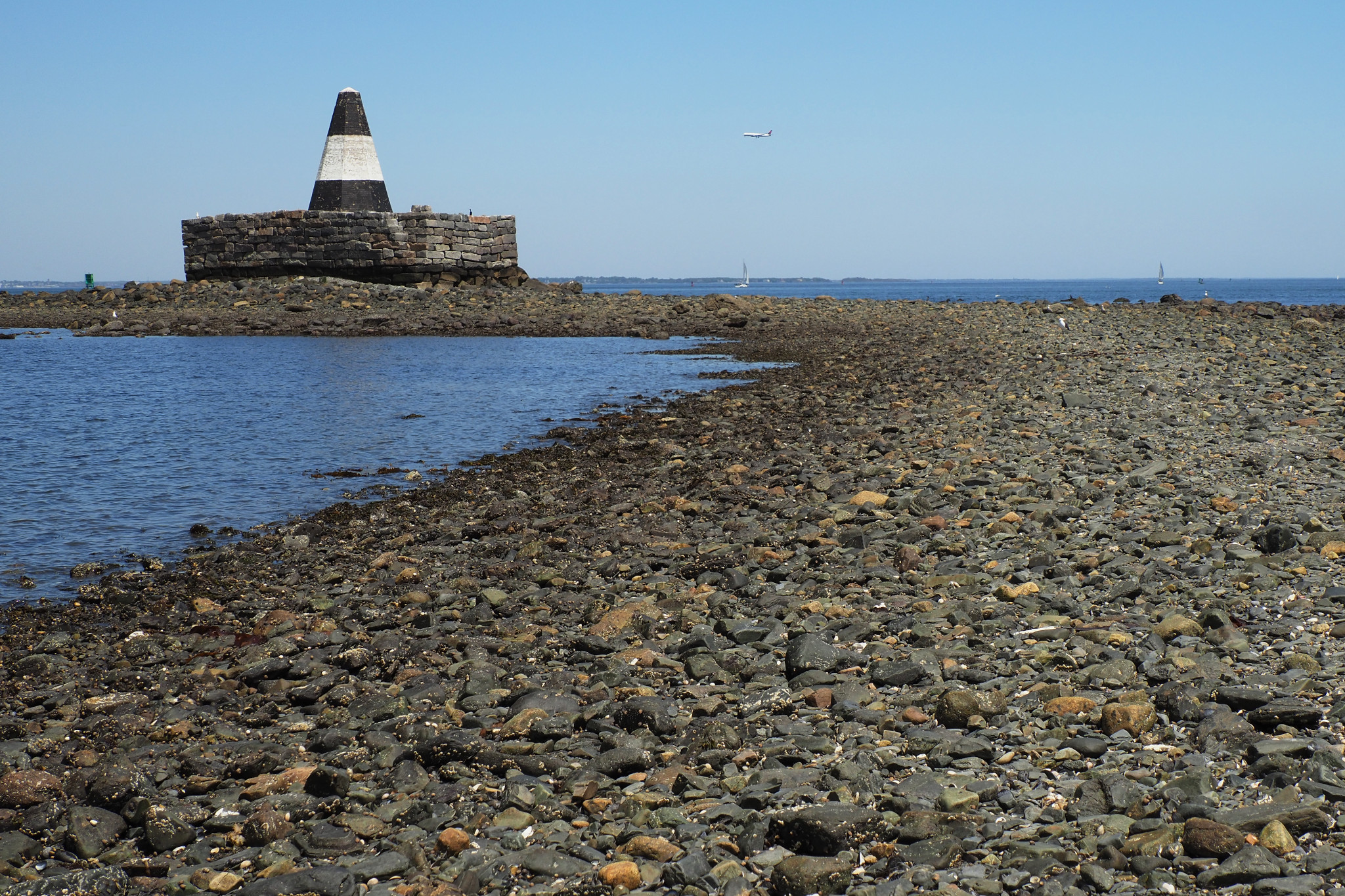
Not sure how this gull egg ended up here.

Black and white.
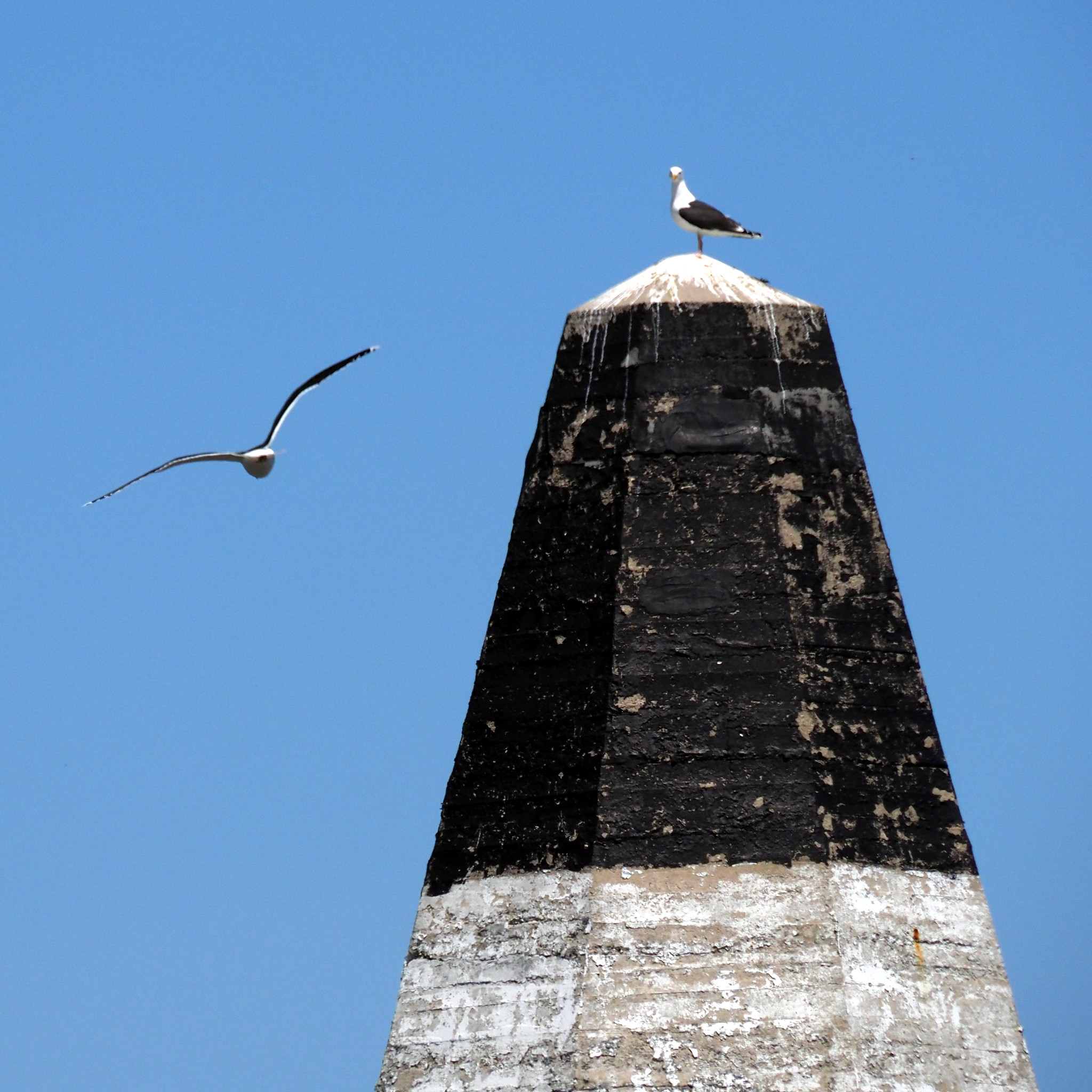
Steps to the pyramid. By the way, I have written above that there is a small piece of the island remaining at the high tide. But now I am looking at the color of the bottom stones of the pyramid base and having my doubts: it does look like the entire island goes underwater, and only the pyramid and its postament remain.
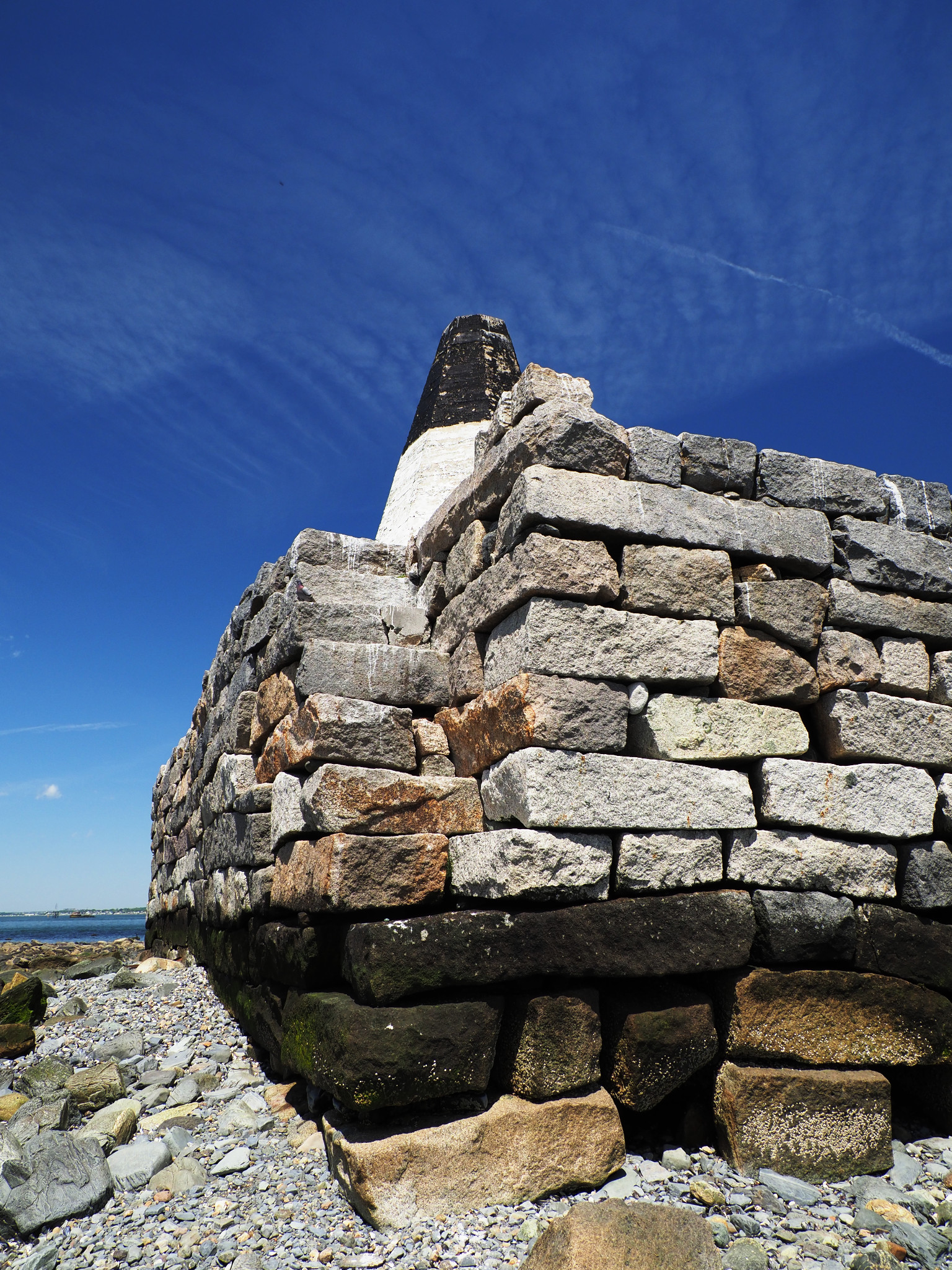
An autograph left on the pyramid by the Coast Guard.
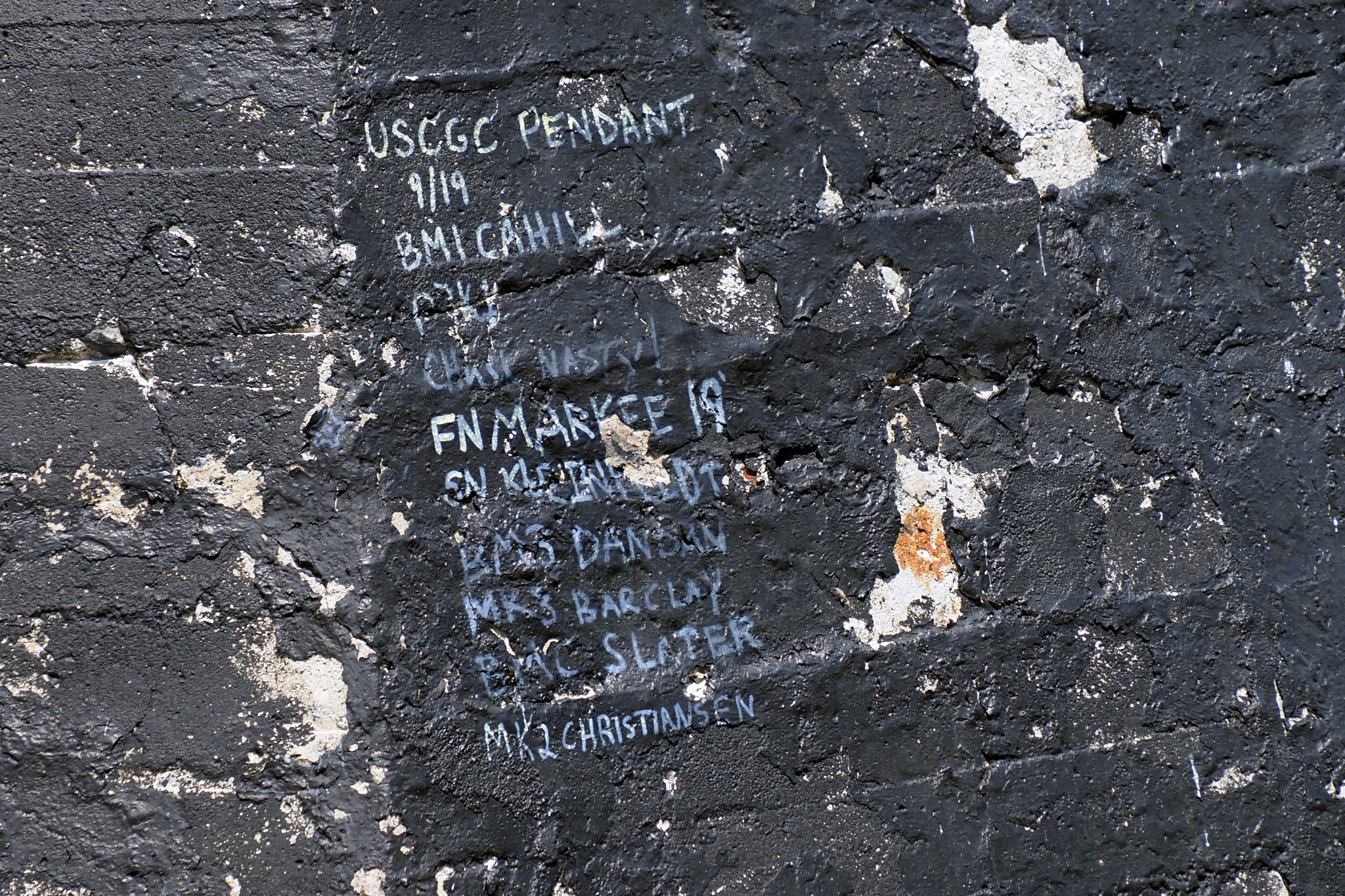
Sergey is observing the surroundings.
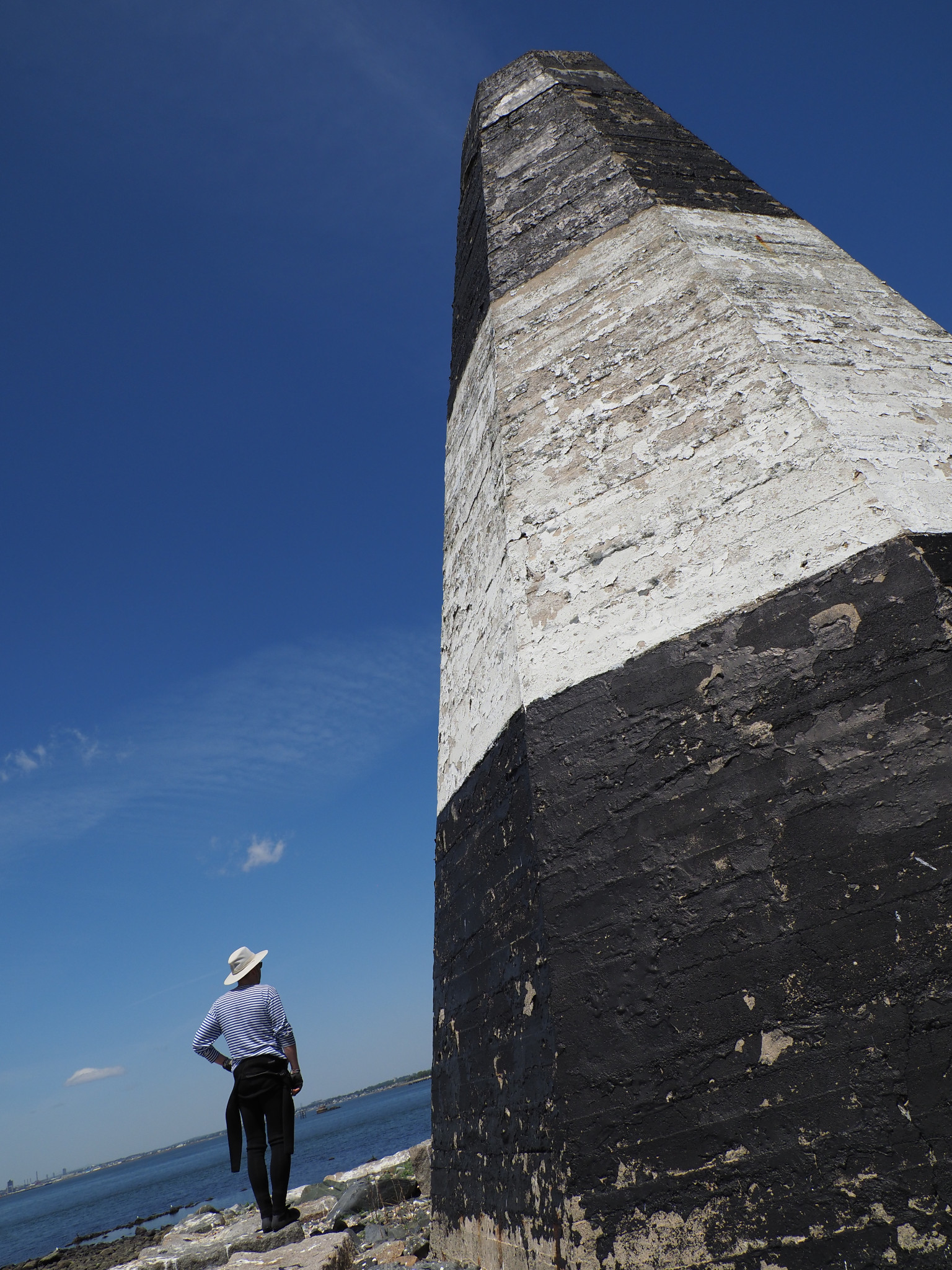
Ships that sail these waters these days: an LNG (liquefied natural gas) tanker and a cruising boat Northern Lights.
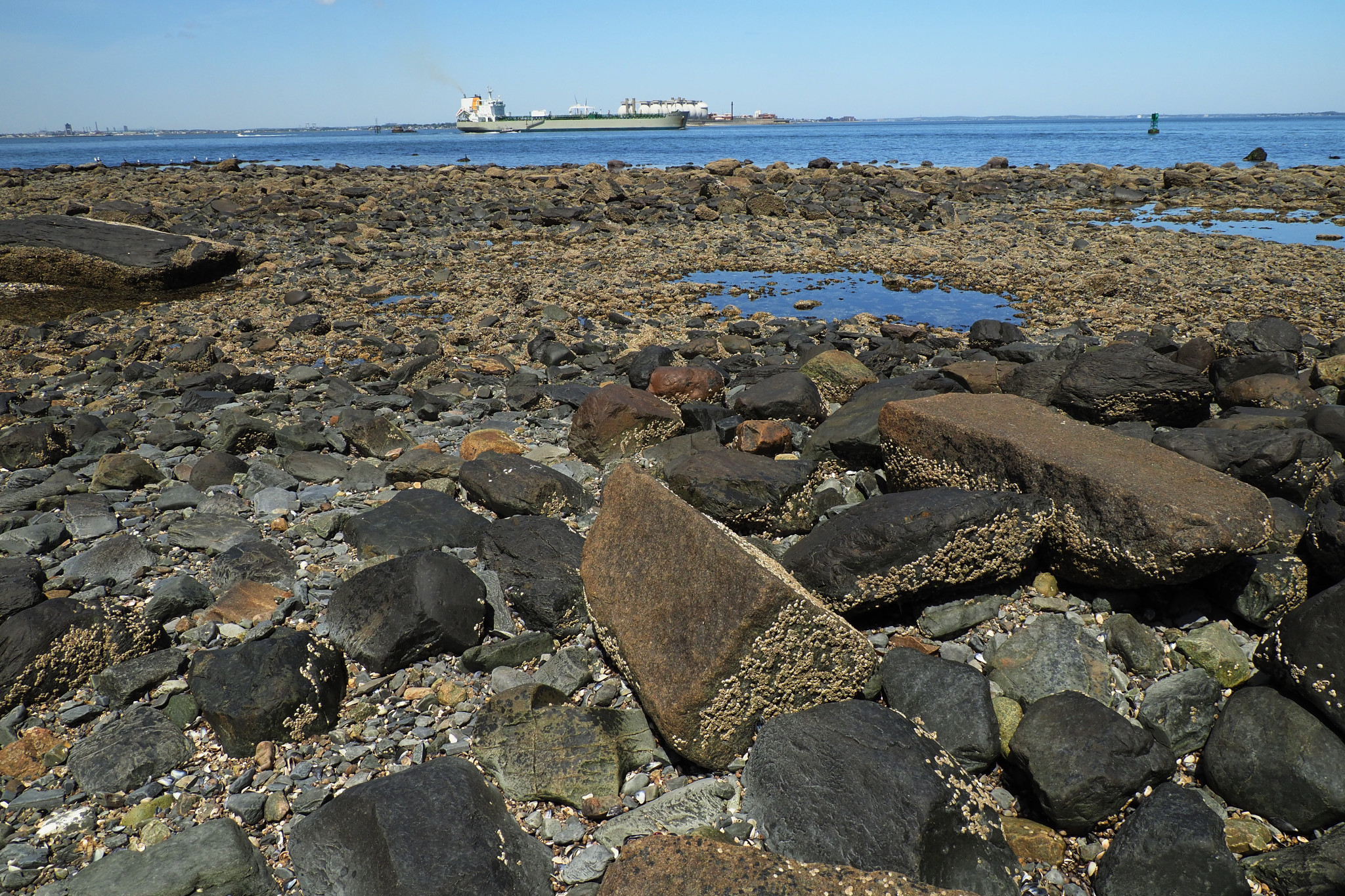
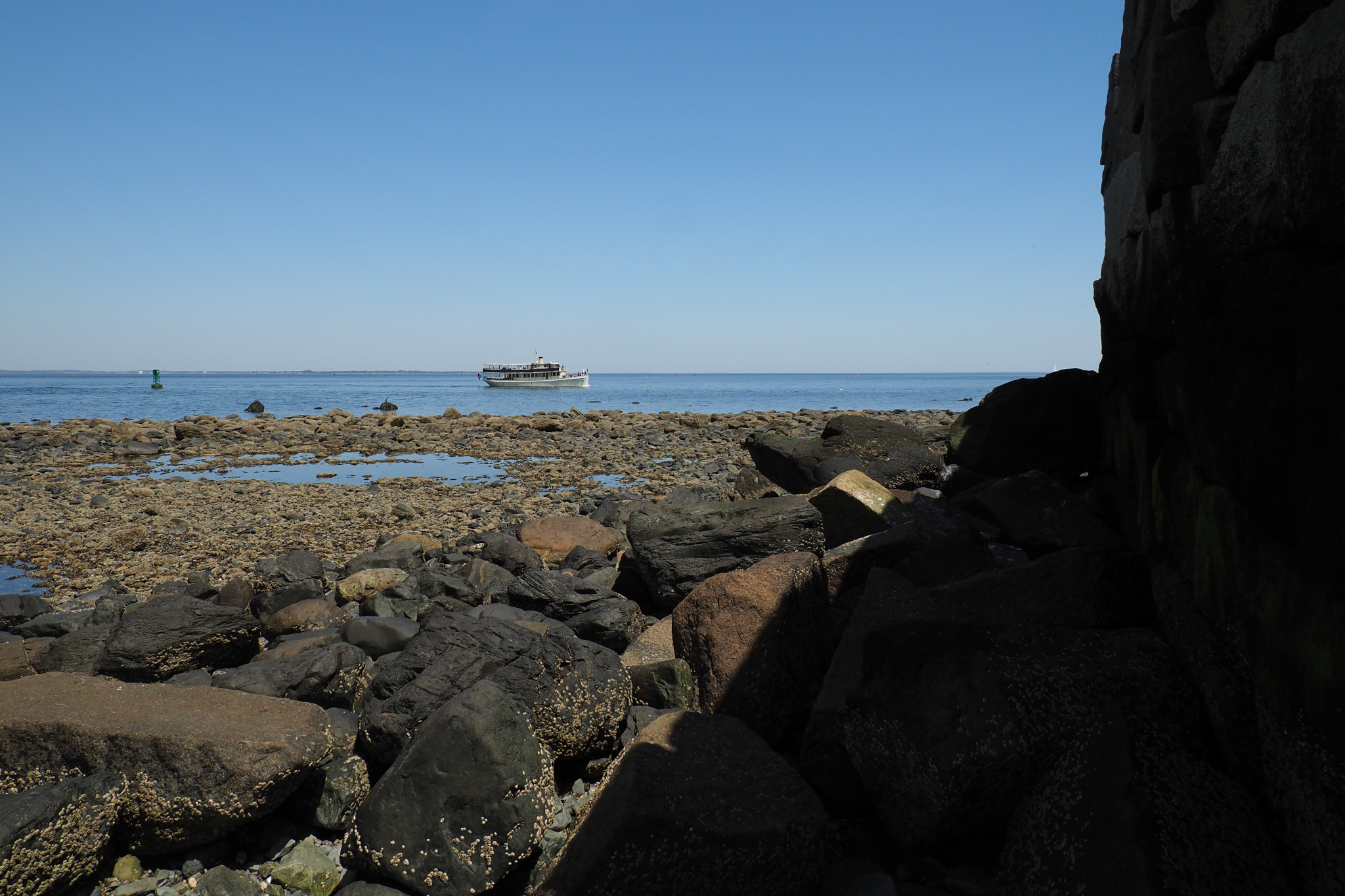
Nixes Mate (a fragment) at the foreground. Behind it: red navigational buoy and the distant Graves Light.
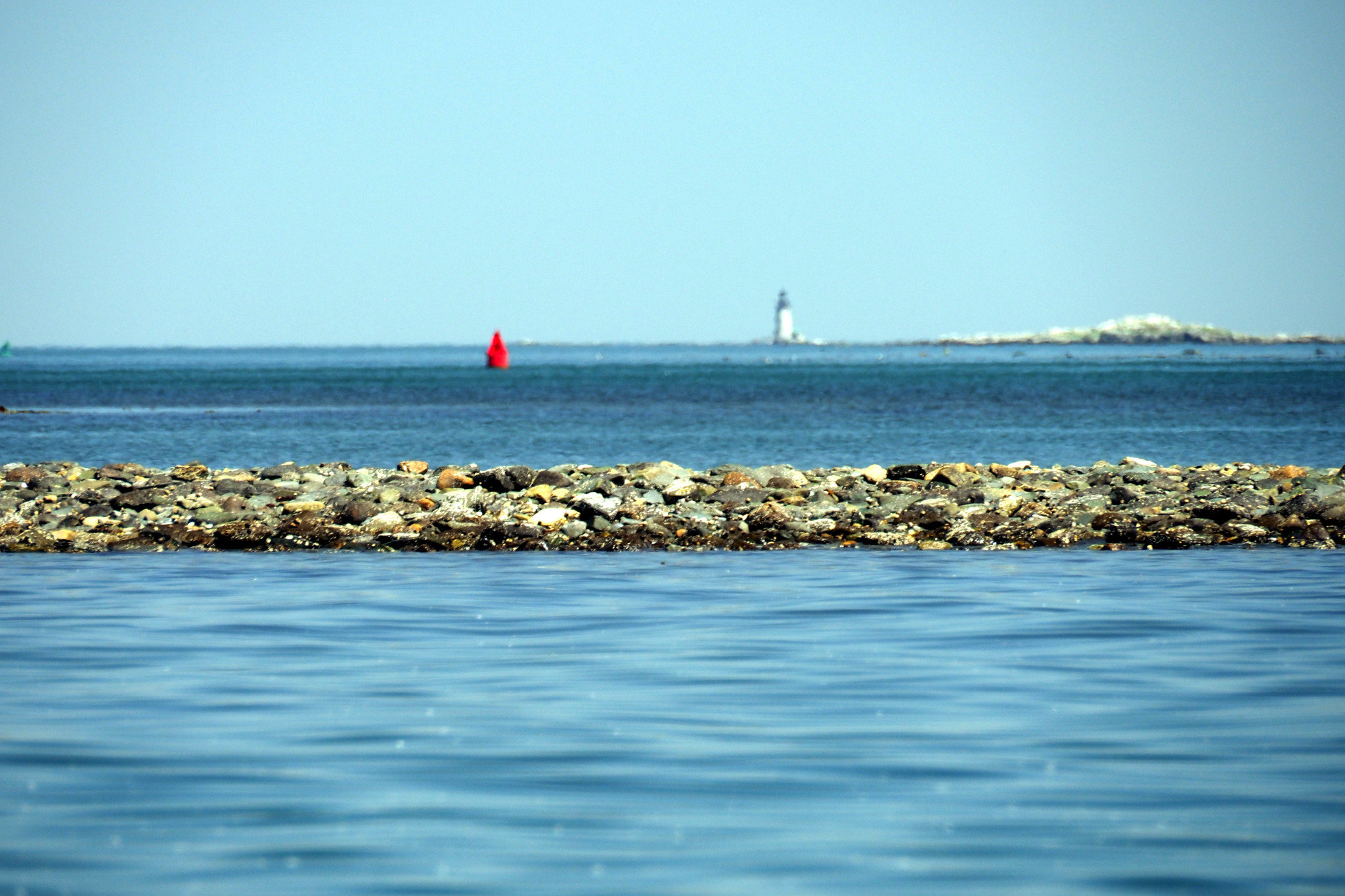
After that visit, we passed Nixes Mate multiple times. It is located so centrally that it would be hard to avoid it.
Last time we passed by it on incoming tide, and the island was already sinking.
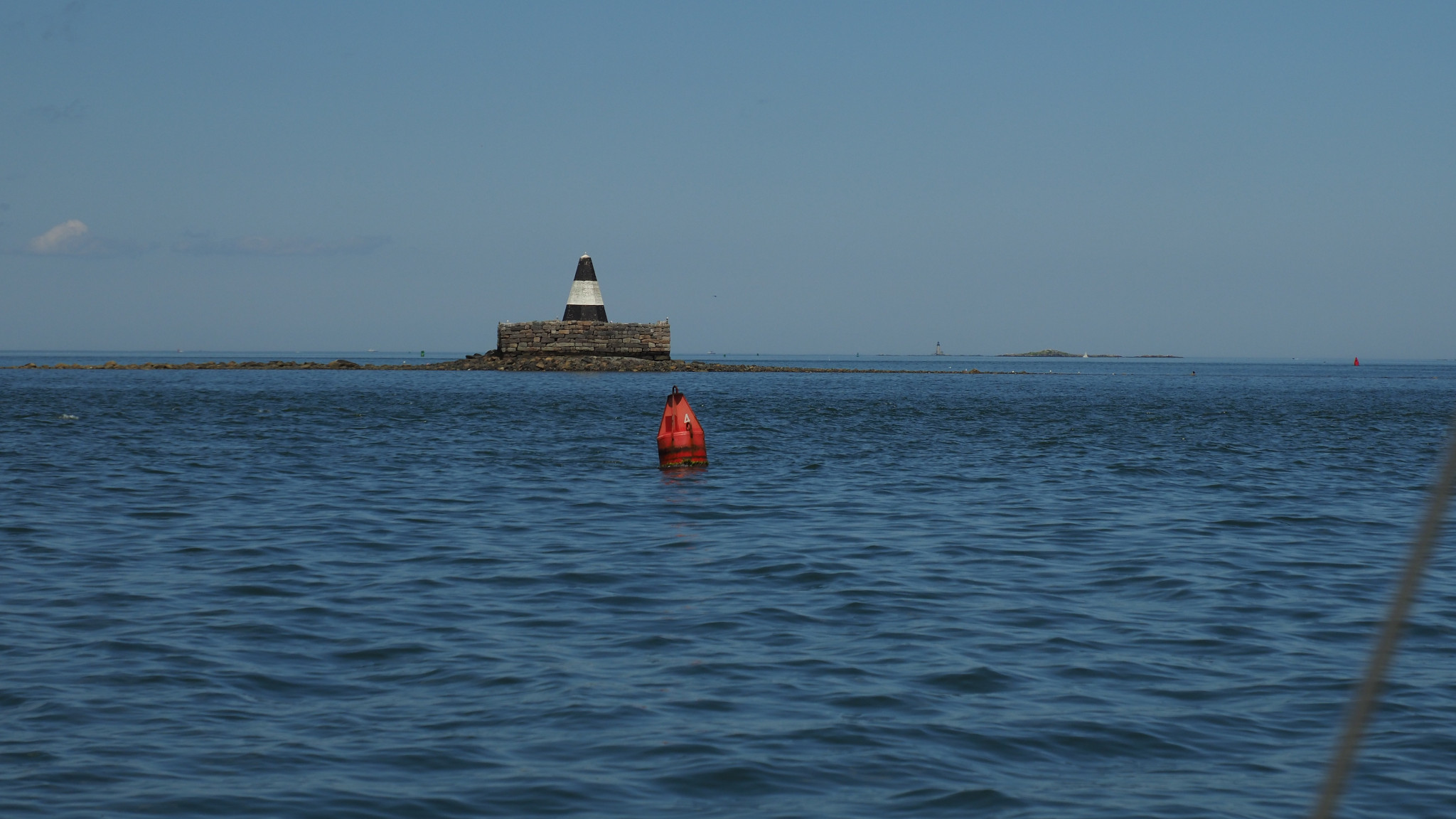
One last piece of Nixes Mate (with Gallops Island in the background). The gulls are taking the stand.
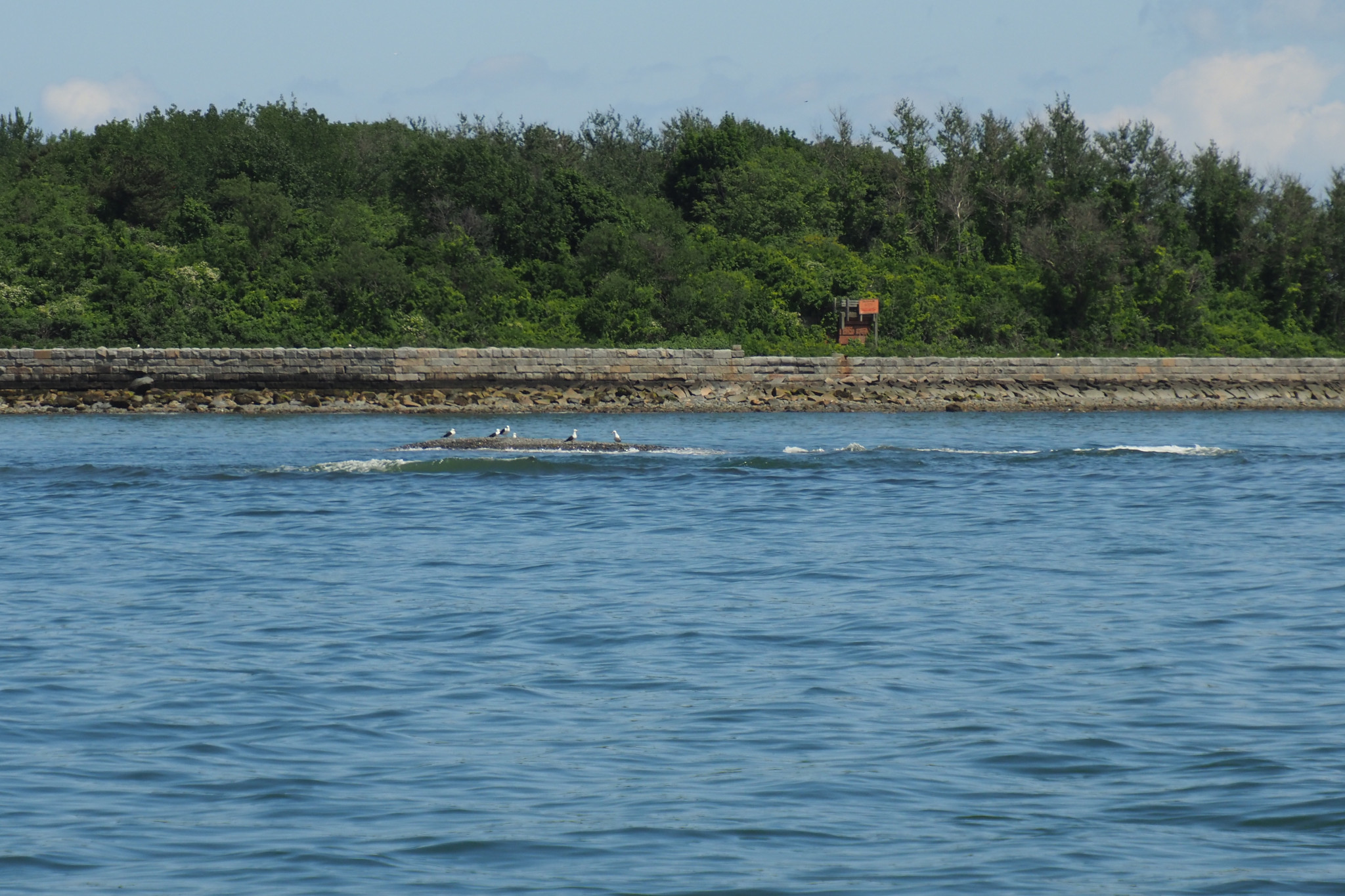
A sunset photo from a few years ago.
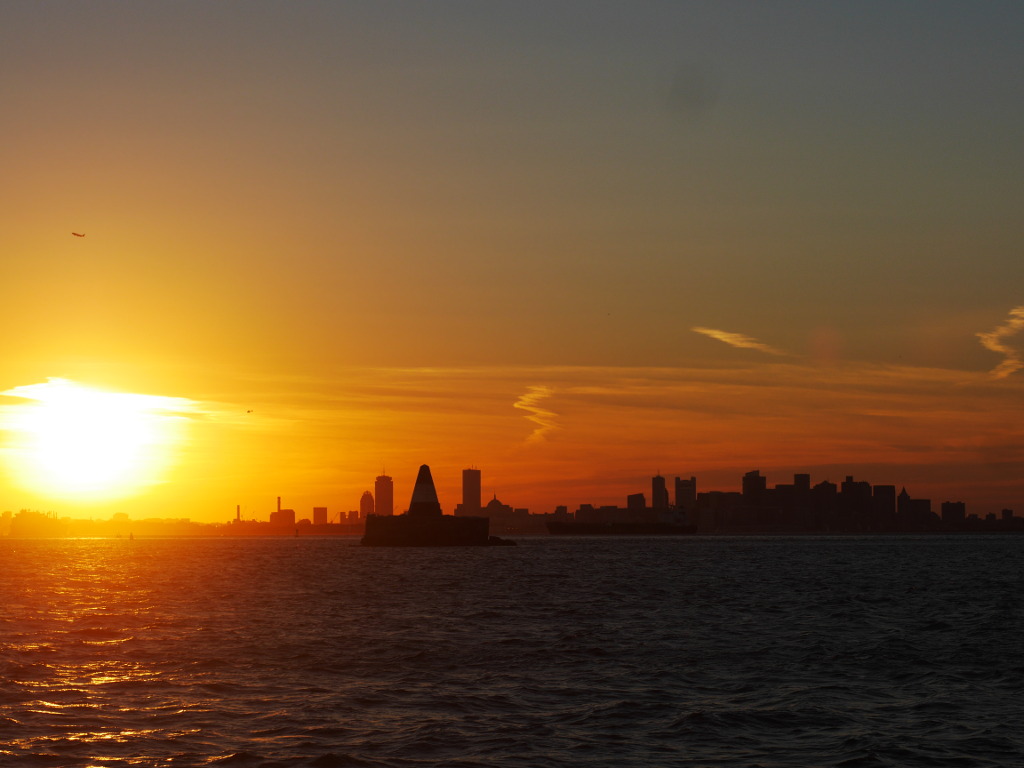
Indeed, at high water only the pyramid remains.
Subscribe via RSS